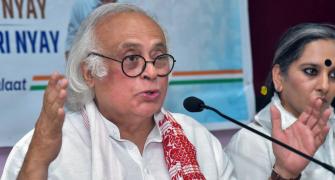'The variables to watch include the monsoon, resolution of NBFC liquidity issues, GST collections, and NPA resolution.'

"For the stock market, there is good liquidity support, which has led to markets doing well even in the face of some economic slowdown," Mihir Vora, director and chief investment officer, Max Life Insurance. tells Ashley Coutinho.
What is your outlook for the market?
We expect markets to be volatile this year, with a positive bias.
We expect good earnings growth of 15% to 20% in FY20.
A large portion of earnings growth is likely to be driven by banking and financials.
Current valuations are high, compared to the long-term trend, which may mean that the markets may not go up in line with earnings.
We expect around 10% returns from the equity market large-cap indices.
While consumption and government-led spending have kept the economy on track for the past few years, there are signs of these slowing down.
There is limited fiscal space available for the government to stimulate growth by spending.
The private-sector investment cycle needs to kick-start and the problems of non-performing assets, sluggishness in real estate, and the non-banking financial company and public sector bank issues still persist.
Thus, the performance of the market may be back-ended towards the second half of the financial year.
On the positive side, global flows have picked up as the US federal reserve and the European central bank have changed the stance to more dovish.
Domestically, the Reserve Bank of India has turned dovish and local mutual funds and insurance companies continue to get good inflows.
Thus, for the stock market, there is good liquidity support, which has led to markets doing well even in the face of some economic slowdown.
Do markets look overvalued?
Valuations are a bit expensive, compared to history, but it could be justified, given that we have not seen earnings growth in the past four years.
We may be at the bottom of the economic cycle, where profits are low, resulting in high valuations.
As profits pick up, markets may look less expensive.
It is difficult to make a sweeping statement with regard to mid- and small-caps, although it is always possible to find 5 to 10 mid-cap winners in a portfolio.
However, given the volatility and slowdown in many indicators in India, overall our portfolio is large-cap dominated at this point in time.
Polarisation in Indian equities became acute last year. Will money continue to chase select names this year as well?
We've seen some very unique trends in the past few years.
The emergence of the local retail MF investor and the rise in mid-small cap-oriented portfolio management schemes and alternative investment funds saw the huge outperformance of mid- and small-caps.
However, 2018 saw sharp correction in these mid-/small-cap names, and investors in this segment have been hurt.
Moreover, the past few months have seen foreign investors sharply increasing their India exposure.
Foreign investors would stick to large-cap index stocks.
Thus, we see the large-cap outperformance to continue.
Even within large-caps, there is earnings growth visibility only in a few names, which will continue to get preferred.
Insurers have kept away from the market in the past few years and have been net sellers most of the time. What are the reasons for the same?
We have been getting steady inflows, given our high persistency and healthy new sales.
For the industry as a whole, the last year should have seen inflows.
Over the past few years, some insurance companies, which had ULIP-dominant sales in the period of 2006 to 2010, have seen outflows from the older ULIPs, as customers started seeing positive returns after 2015.
Thus, while gross sales for those companies recorded healthy growth, the asset growth was not that much due to the outflows from previous policies.
Do you see a sustained recovery in corporate earnings in the coming quarters? What are the possible roadblocks for the recovery to come through?
There is visibility for the next couple of quarters due to a subdued base.
Beyond that, we need a genuine pick-up in consumption, capital investment, and real estate.
The variables to watch include the monsoon, resolution of NBFC liquidity issues, goods and services tax collections, and NPA resolution, among others.
How soon do you see stability returning to the debt market? What are the challenges that you foresee?
Globally and locally, central banks are turning benign.
The sharp uptick in foreign flows into the debt market is a direct function of easy global liquidity and high Indian real rates.
Domestically, the inflation rate has remained below the RBI's projections and is expected to remain below 4% in the medium-term, while growth continues to slow down.
Thus, lower interest rates are warranted.
However, in spite of many positives such as rate cuts, open market operations, low inflation, and healthy FII flows, the long-bond yields are not going down meaningfully due to significant supply of paper.
We see significantly higher issuances over the next year due to rising deficits at the Centre and state levels.
Continued liquidity support by OMOs and the new liquidity tool of foreign exchange swap will be needed for the market to absorb this supply.
India continues to remain vulnerable to oil prices and global flows.
We expect volatility to continue in the debt markets.
How do you view the RBI's recent decision to cut the repo rate by 25 basis points?
Markets were expecting at least a 25 bps rate cut.
A significant portion of participants were also expecting a change in stance from neutral to accommodative, which did not materialise.
We expect one more rate cut in the current financial year and a shift in stance to accommodative if growth slowdown persists.
Oil and other commodity prices and the monsoon rain remain key variables to monitor.










